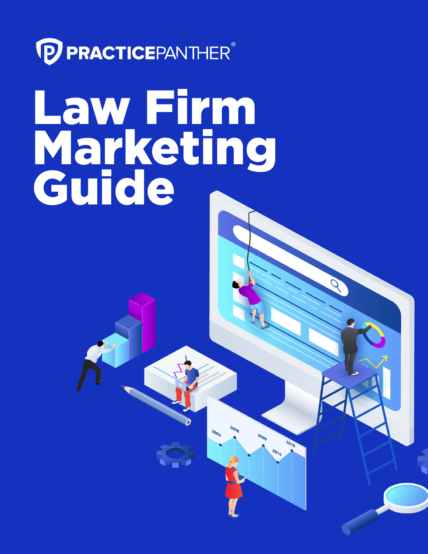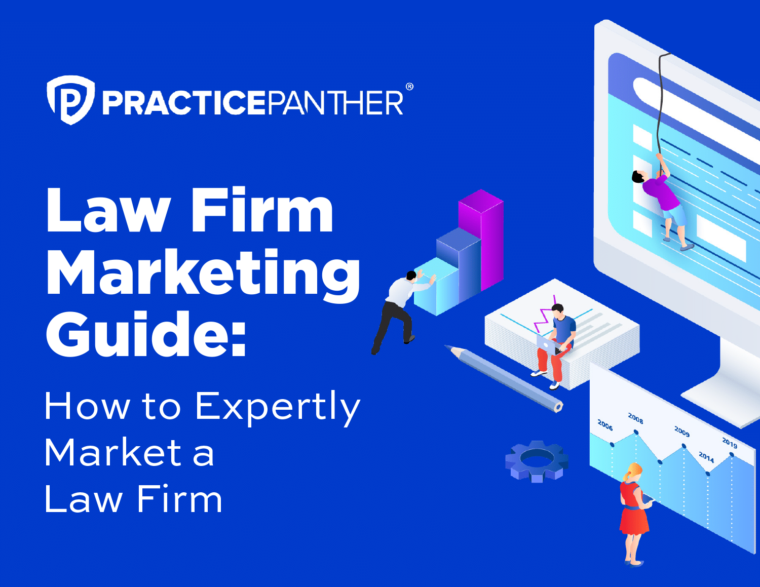Mastering the art of search engine optimization or SEO for law firms can feel overwhelming.
Most law firms understand the importance of having a website, but many know little about search engine optimization (SEO) or organic traffic. When done correctly, SEO can increase lead generation and position your law firm high on search engines, like Google. With these five tips, boosting your SEO efforts won’t seem as daunting.
1. Identify Keywords
The first and most important step on your SEO journey is to determine your law firm’s keywords. These words will be specific to your firm and are what people are most likely to search for. Google Analytics is a powerful tool that can easily help your law firm track and determine which keywords prospective clients are using to find you.
There are two types of keywords:
Long-tail keywords
These strings of words are targeted and determine the searcher’s intent. This could be a question for a specific need or guidance on a situation. An example would be, “do I need an attorney if my child was in a fight at school in Florida?” Or, “Kansas lawyers for employee injuries.” Using long-tail keywords improves your law firm’s ranking and narrows the search results to target prospective clients who are more likely to acquire your services.
Short-tail keywords
You guessed it, these keywords are short and generic. Short-tail keywords are no more than three words and cover broad topics that your competitors can also be searched for. Examples include, “injury lawyer” or “defense attorney.” These keywords open the pool of search results, limiting your law firm’s visibility. However, short-tail keywords are still important and play a role in your overall SEO strategy.
2. Incorporate Keywords
Incorporating keywords into your law firm’s website is essential for making sure potential clients can find you online. But simply scattering keywords across the page isn’t enough. There’s a method to getting them noticed by search engines, and it requires strategic placement. When search engines crawl your site, they look for specific areas to understand what your content is about, and that’s where keywords come in.
Titles, Subheadings, and Headlines (H2 or H3)
These areas are prime real estate for keywords. Why? Because both search engines and visitors pay extra attention to headings and titles. Search engines use headings to understand the structure and main points of your content, helping to match your page with relevant searches.
Visitors’ eyes naturally gravitate to these spots too, so if they see the terms they’re searching for in bold headings or subheadings, they’ll know your page is relevant. This increases the chances that they’ll click on your page and stay longer, which also helps your ranking.
For first-time users of SEO in the legal field, remember this: strategic keyword placement in your headings not only helps search engines recognize the relevance of your content but also makes it clear to potential clients that they’ve found the right place. It’s a win-win.
Meta Descriptions
Meta descriptions are the short summaries that appear under your page’s title in search results, giving potential visitors a glimpse into what your page offers. While it’s essential to write a strong meta description that includes your keywords naturally, it’s also important to understand that Google doesn’t always use the one you set. Sometimes, Google will generate its own snippet based on the content it finds most relevant to the search query.
Even though you can’t control when that happens, setting a clear, well-crafted meta description is still worth the effort. It gives search engines a good sense of your page’s main points and can improve click-through rates when it does show up. Think of it as your elevator pitch — a chance to draw in the right visitors.
Images
Images do more than make your website look good — they also serve as key SEO elements when optimized correctly. Adding alt text with keywords helps search engines understand the content of your images, which boosts your chances of appearing in image search results. Alt text is also crucial for accessibility, making sure those who use screen readers can navigate your site effectively.
3. Avoid “Keyword Stuffing”
Once you have your keywords and start incorporating them throughout your law firm’s website, be mindful to do so sparingly. The key is to have a healthy amount of keywords placed in strategic places, like the ones previously mentioned.
However, overusing keywords will make your website feel spammy to the reader. Additionally, you could be penalized by search engines for overusing keywords in an irrelevant or unnatural way. This practice is also known as “keyword stuffing” and Google could knock your law firm’s website ranking for it.
An example of keyword stuffing:
“We have the best criminal defense lawyers. If you’re looking for a criminal defense lawyer, contact our law firm to get the best criminal defense lawyer.”
The thought process here is that if you repeat the keyword, you’ll have a better ranking in search engine results. This is quite the opposite and will hurt your law firms website rankings.
4. Create Fresh Content
If your law firm has a marketing department, they’re probably always asking your lawyers for content (and for good reason.) Blogs are a great way for your law firm to naturally pump search engines with your keywords. Posting just once or twice per a week will boost your law firm’s website visibility.
As previously mentioned, you’ll want to use keywords in your title, subheadings, and sprinkled throughout the body of the blog. The key here is to not overload your body with keywords. A general rule of thumb is to have no more than five keyword matches in your content.
Two things probably come to mind for the lawyers reading: 1) I have no time and 2) I don’t know what to write about. These are legitimate concerns for busy lawyers, but writing blogs doesn’t have to be incredibly time-consuming or dull work. Write about topics you’re passionate about, common questions prospective clients ask or changes to legislation that affect your practice. Lawyers should look at blogs as a way to position themselves as thought leaders in topics they’re well versed in. Additionally, writing about common client concerns could help diminish answering repetitive questions, making your life a lot easier.
5. Reviews & Google Business Profile
Last but not least, if your law firm hasn’t claimed or activated a Google Business Profile, do so as soon as possible. A Google Business Profile is one of the best ways to manage how your business will appear in search results. You’ll want to make sure your profile is up-to-date with the basics: address, hours, pictures, etc. You can even use this tool to post updates or link to content on your website.
There are many factors to how your Google Business Profile account will appear in search results. One of the most important are the reviews. When a prospective client is searching and your business pops up, they’re going to be drawn to the relevancy but also, the amount of positive reviews. Law firms often struggle with acquiring quality reviews because they lack a process to do so. A simple way to boost reviews is to incorporate a seamless intake process with software like PracticePanther that can automate the asking-for-reviews process.
Mastering SEO for law firms will take practice, trial and error, and consistency. We hope with these tips you’ll feel more at ease with SEO and the best practices to make your firm’s website standout.





